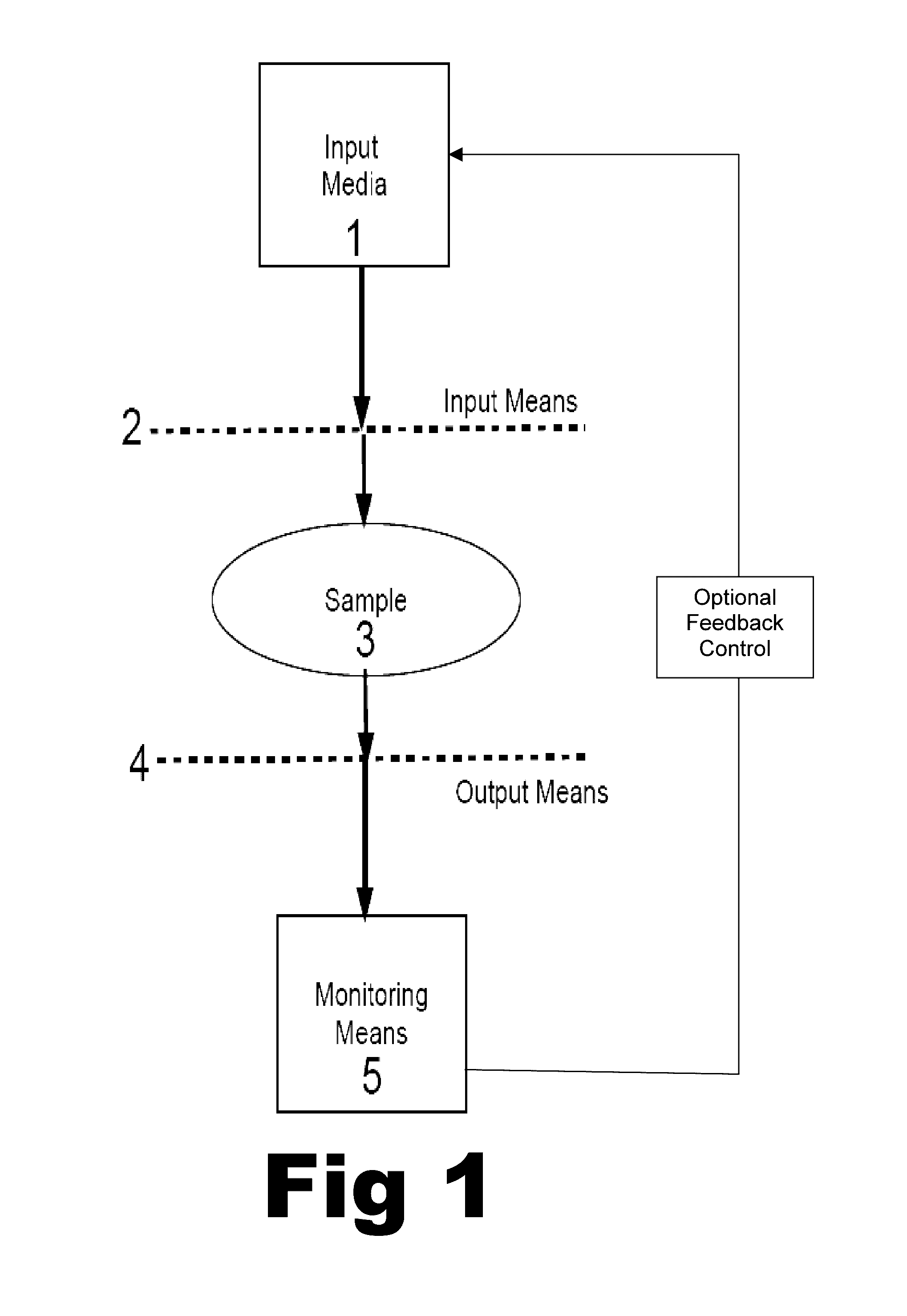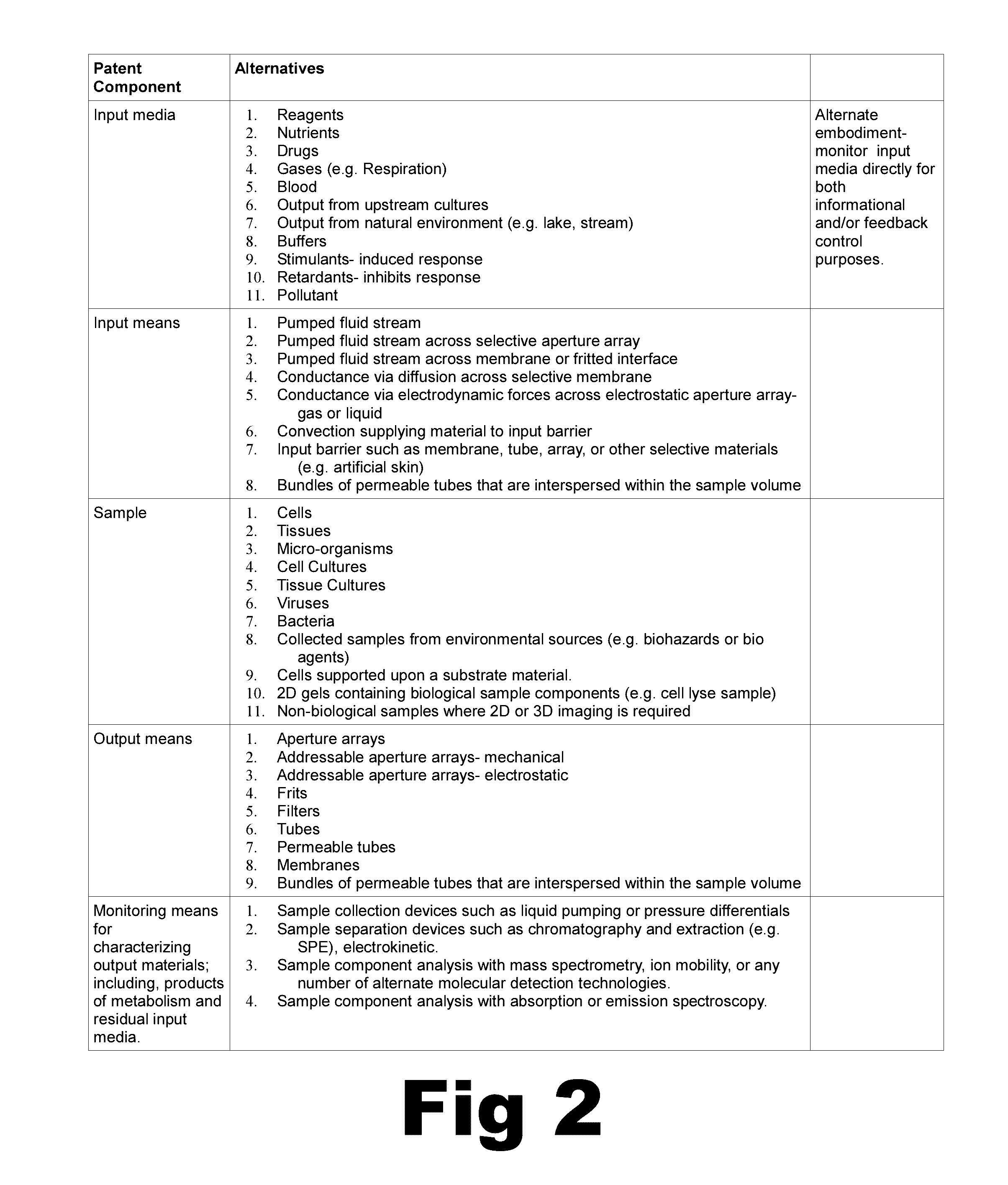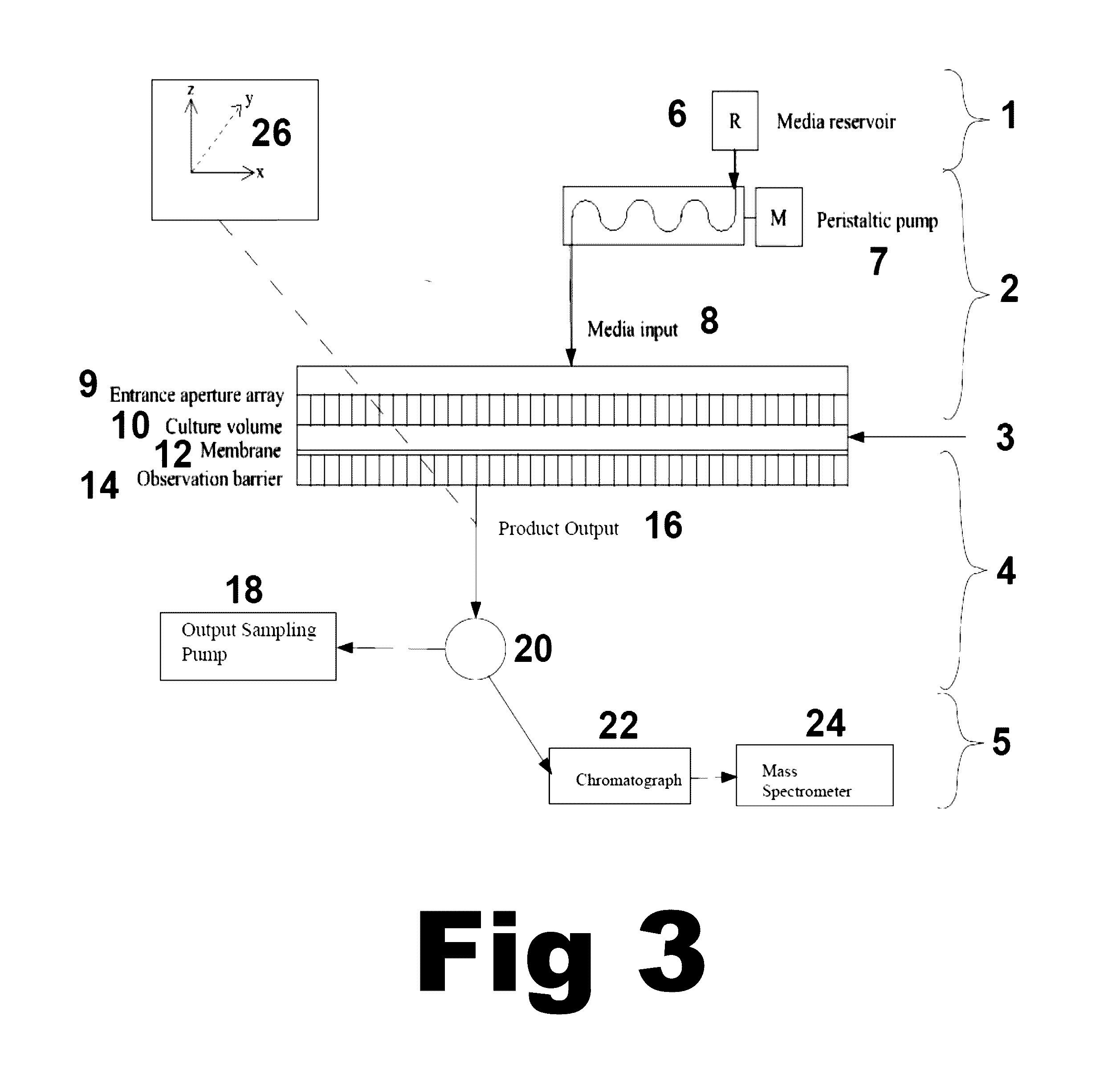Micro-Sampling for Cell, Tissue, and Micro-Organism Monitoring
a micro-organism and cell technology, applied in the field of chemical and biomolecular testing and control of cellular behavior, can solve the problems of significant quality limitations, and difficulty in acquiring biochemical and physical information relating to the activity of cells, tissues, microorganisms, etc., and achieve limited or cumbersome tissue temporal studies, loss of spatial resolution, and chemical structure modification
- Summary
- Abstract
- Description
- Claims
- Application Information
AI Technical Summary
Benefits of technology
Problems solved by technology
Method used
Image
Examples
example 1
Preferred Embodiment—(Simple Laminate)
[0083]A preferred embodiment is schematically illustrated in FIG. 3. The media reservoir 6 containing input media 1 is delivered to sample 3 by input means 2 comprising a peristaltic pump 7. The media input 8 is delivered through entrance aperture array 9 to culture volume 10 containing sample 3. Said sample comprising cells, tissues, or micro-organisms respond to said input media with biological activity that results in both absorption of at least some of the input media and subsequently the output of products of said biological activity. The output products are passed through membrane 12 through observation barrier 14. Said barrier comprising an array of apertures direct the product output 16 toward downstream chemical or physical monitoring means 5. The said output is directed to sample conditioning means 20 via output sampling pump 18. Sample output monitoring is accomplished by separating output components with chromatograph 22 and analyzin...
example 2
Alternate Preferred Embodiment—(Additional Stages of Conditioning)
[0088]Additional stages of sample conditioning may be interposed after the observation barrier but within the device prior to analysis. A plurality of aperture arrays can be positioned downstream from the observation barrier with gaps between which constitute a gate or switch. Sample may be selectively moved across stages (gaps) using hydrostatic (pressure), electrokinetic (voltage), or other mechanical means (valves) of gating sample. In the case of electrokinetic sampling the internal hole surface can be tailored using surface coating materials to establish a dielectric where a voltage drop across the two outside x-y planes of the array can be established. The inside structure of the hole can also be modified to include membranes, porous plugs, stationary phases, etc. to achieve desired conditions for solute migration. The rims of each hole on each x-y plane can be metalized and traced to edges for addressing indivi...
example 3
Alternate Preferred Embodiment—(Additional Stages with Electrospray Array Output)
[0090]The additional arrays, or x-y plane sampling apertures, can also be used for ion generation using atmospheric pressure ionization or desorption ionization electrospray methods.
[0091]FIG. 5 illustrates a system using two downstream aperture arrays and a x-y translation stage populated with sampling apertures. The system can load sample from the observation barrier through either hydrostatic pressure, electrokinetic, or mechanical means, perform preconcentration and electrophoretic separation of the sample mixture, and optionally perform electrospray ionization if the translation stage sampling aperture comprises a spray nozzle. In this embodiment an exit for the culture media, or downstream solvent, is provided radially at the gap between the observation aperture and addressable array 1. An additional flow stream consisting of an appropriate solvent for analysis and / or preconcentration is introduce...
PUM
| Property | Measurement | Unit |
|---|---|---|
| diameter | aaaaa | aaaaa |
| volume | aaaaa | aaaaa |
| mass spectrometry | aaaaa | aaaaa |
Abstract
Description
Claims
Application Information
 Login to View More
Login to View More - R&D
- Intellectual Property
- Life Sciences
- Materials
- Tech Scout
- Unparalleled Data Quality
- Higher Quality Content
- 60% Fewer Hallucinations
Browse by: Latest US Patents, China's latest patents, Technical Efficacy Thesaurus, Application Domain, Technology Topic, Popular Technical Reports.
© 2025 PatSnap. All rights reserved.Legal|Privacy policy|Modern Slavery Act Transparency Statement|Sitemap|About US| Contact US: help@patsnap.com



